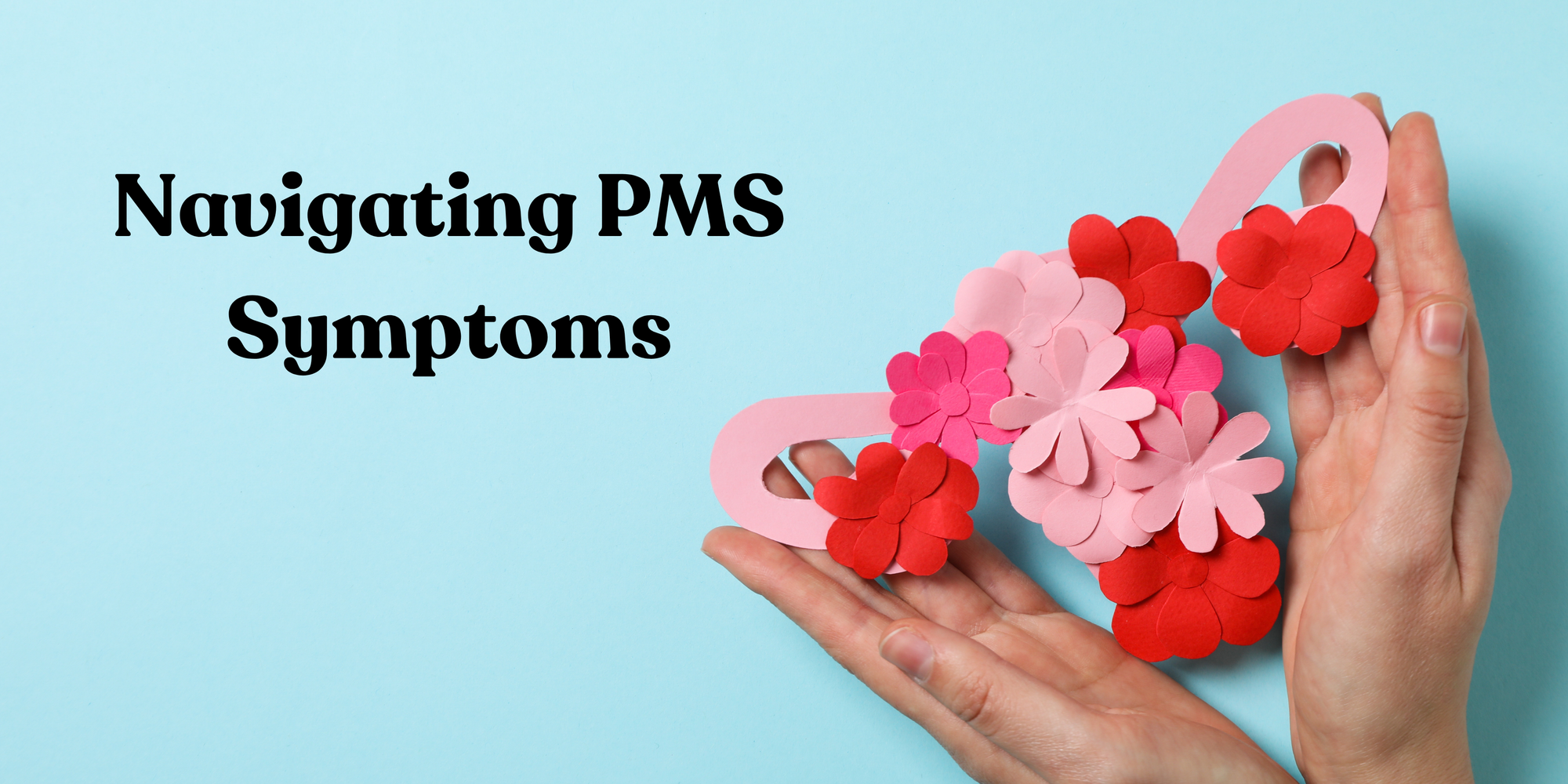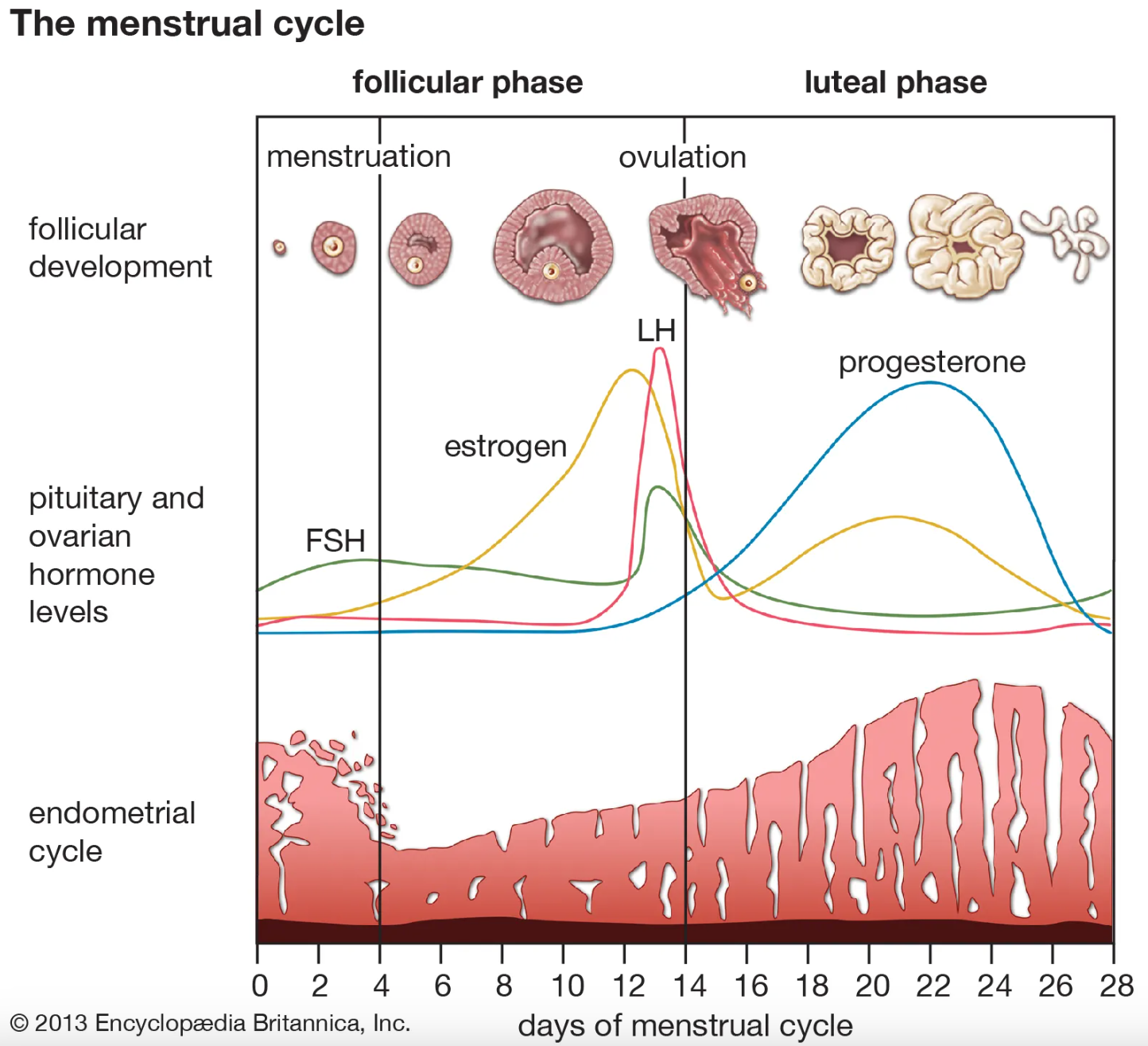Take Back Control of Your Health.

Ladies, something that most of us suffer from at some point in our lives is PMS. PMS stands for premenstrual syndrome; this occurs usually around 10 days before your period, in your luteal phase, and then symptoms disappear once your period begins.
There is also a more severe version of PMS, which is PMDD - this stands for premenstrual dysphoric disorder, and this causes significant emotional and physical symptoms in the week or two before the next period.
Here I want to explore why PMS/PMDD occurs, the symptoms, and, of course, ways we can begin to manage these symptoms, as they shouldn't be debilitating our lives and how we feel.
Why Does PMS occur?
Women who experience these changes in the luteal phase typically have heightened sensitivity to the normal fluctuations of oestrogen and progesterone during this phase; this can be due to many factors, such as genetics, chronic stress, gut health, and poor liver detoxification.
Oestrogen drops during the luteal phase of our cycles, and if we have higher levels of oestrogen, when these drop, the withdrawal symptoms can cause fatigue, night sweats and migraines.
Progesterone becomes our dominant hormone during the luteal phase, where its role is to prepare the uterine lining for a potential pregnancy by thickening it.

If you produce enough progesterone, it will help keep your mood calm and steady, mitigating the ups and downs of oestrogen. If your progesterone drops off quickly, or you don't produce enough, this is when we can feel more anxious & have a low stress tolerance.
Common Symptoms Associated with PMS:
- Fatigue
- Changes in appetite and sleep
- Bloating
- Breast tenderness
- Weight gain from water retention
- Headaches
- Cramps
- Joint/muscle aches/longer recovery from training
- Digestive changes - constipation is common pre-period due to progesterone's job - holding onto as many nutrients as possible
- Acne/skin changes
- Irritability/moodiness
- Mild anxiety or stress
- Sadness or emotional sensitivity
- Feeling overwhelmed
- Trouble concentrating
- Lower motivation/energy
- Increased emotional reactivity
- Mild tension/feeling on edge
What Can We Do About Managing Our Symptoms?
The good news is that we can improve these symptoms through lifestyle changes and repairing nutritional imbalances to support our hormones and bodies during this time.
We can support our bodies in 3 main ways (referenced from Lara Briden's book - Period Repair Manual)
- Enhance progesterone & GABA (neurotransmitter which supports us feeling calm)
- Stabilise oestrogen and metabolise it properly
- Reduce inflammation to calm your hormone and neurotransmitter receptors
The more inflammation we have in our bodies, the more we will react to these hormonal changes during our cycles, which can enhance oestrogen and decrease progesterone and GABA. Chronic inflammation doesn't just show up as red, swollen joints or sore muscles — it quietly affects your entire body, including your hormones.
Inflammation can result from chronic stress levels, poor diet and blood sugar spikes, hormonal imbalances, gut health issues, nutrient deficiencies, toxin exposure, lack of sleep, and autoimmune conditions.
Diet & lifestyle interventions to improve your hormonal health:
Reduce inflammatory foods, such as sugar, processed dairy products, wheat, vegetable oils, and alcohol. Less inflammation leads to a greater chance of progesterone production, which in turn reduces PMS. Dairy can be a common trigger for many, as it can trigger the release of histamine, making headaches, anxiety, and brain fog worse during your luteal phase.
Reduce alcohol: Alcohol interferes with progesterone and increases histamine (which worsens PMS). Limit to max four drinks per week to support hormone balance.
Manage stress: High stress levels lower progesterone, disrupt ovulation, and exacerbate PMS symptoms. Chronic stress can disrupt your HPA axis (the stress response system). Stress now = PMS symptoms later. Prioritise self-care: walks, time in nature, or reading a book.
Exercise helps regulate cortisol levels, improve mood, and reduce PMS symptoms by enhancing circulation and supporting liver detoxification. During the luteal phase, levels of serotonin and dopamine may decrease. Exercise helps naturally boost these "feel good" chemicals to support a better mood and emotional state.
Reduce endocrine-disrupting chemicals, which often appear in cleaning products, fragrances, and other products, and can impact our hormonal levels.
Maintain healthy gut bacteria, as these bacteria help remove oestrogen safely from the body. Unhealthy gut bacteria can do the opposite, causing oestrogen to be remetabolised by the body (which we don't want) and avoiding antibiotics as much as possible, as these damage the gut lining. If you need to take them, support your gut health with probiotics immediately after finishing the course of antibiotics.
Maintaining a healthy body weight, as excess fat cells make a type of oestrogen called estrone, which isn't the same as estradiol (the main oestrogen your ovaries make). While estrone is weaker, it accumulates in the body and can disrupt the balance of oestrogen and progesterone.
Nutrients Required for Healthy Periods:
Magnesium
Supports progesterone production.
Reduces stress, inflammation, and helps GABA (calming neurotransmitter).
We often do not get enough magnesium from food alone.
We recommend Designs for Health - Magnesium Night Powder, which contains 350mg of magnesium (an optimal dose to support your body) and the added benefits of saffron & passionflower extract to support mood and promote restful sleep.
Vitamin b6
Helps make progesterone and GABA.
Reduces inflammation and supports histamine clearance.
We get B vitamins from animal-based sources, but it may not be enough to support our hormones (B vitamins are depleted easily, especially with high stress levels). The best vegetarian source is chickpeas.
We recommend Designs for Health B Complex to support your nervous system health and function; this contains 50mg of B6.
Magnesium + B6 = Best combo for PMS.
Selenium
Essential for healthy progesterone levels.
Found in: brazil nuts, seafood, organ meats, salmon.
I recommend consuming 1-2 Brazil nuts every couple of days to increase your selenium intake; however, it's a nutrient you don't need in huge amounts, so no more than that is needed.
Zinc is one of the most potent anti-inflammatory supplements. It decreases inflammation and histamine, while increasing progesterone and GABA. Zinc supports the brain's neurotransmitters, like GABA, serotonin, and dopamine — all of which regulate mood, sleep, and emotional resilience. If you're zinc deficient (which many of us are!!), You'll be much more likely to experience PMS.
We recommend the Designs for Health - Tri-Zinc Supreme.
Good Food Sources of Zinc:
- Oysters (the highest!)
- Red meat and poultry
- Eggs
- Pumpkin seeds
- Cashews
- Chickpeas
- Dark chocolate
- Whole grains
If you are suffering, it's vital to look at your nutrient levels.
Unfortunately a blood test won't cut it. The Hair Mineral Test is a hair test that will uncover all your micronutrient levels and show you exactly what you are deficient in so you can start restoring balance to your body.
You can buy the test here - https://www.femalefundamentals.com.au/test-your-female-fundamentals
In summary, our periods are our fifth vital sign; let's use them as information and learn to understand what our bodies are trying to tell us. If you're experiencing any of these issues, remember it's common, but it's not normal. Changing our lifestyle habits and managing our stress levels aren't easy, I know, but we choose our hard.
Once we know better, we must do better.
Amelia xo

